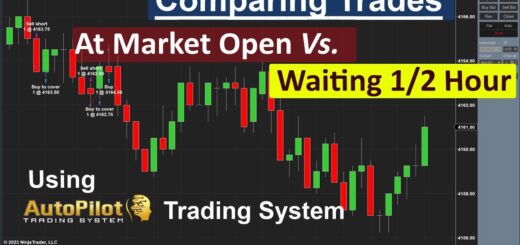A Closer Look at Autopilot Trading System Failures
Greetings, fellow traders! Today, on this Tuesday, May 7th, let’s delve into the fascinating world of autopilot trading systems.
Whether you’re intrigued by the mechanics of automated trading or contemplating its integration into your strategy, you’ve come to the right place. Join me as we navigate the complexities of autopilot trading systems and uncover what you need to know before diving in.
Before we plunge into the technical details, let’s address the crucial aspect of risk. Trading inherently carries risks, and automated trading is no exception. It’s imperative to only invest funds that you can afford to lose. With that important disclaimer out of the way, let’s unravel the mechanisms behind successful autopilot trading.
Autopilot Trading System Explained:
At its core, an autopilot trading system is designed to execute trades automatically based on predefined parameters. But what features should you prioritize when selecting an automated trading system? Here’s a breakdown:
- Entry and Exit Strategies: A reliable system should smoothly enter and exit trades, with options to set stop-loss and take-profit levels.
- Trailing Stop and Break Even Techniques: Incorporating trailing stops and break-even points is crucial for safeguarding profits and minimizing losses.
- Time Management: Define the trading hours that align with optimal market conditions to maximize efficiency.
- Adaptability: Seek systems capable of adjusting based on market dynamics, such as shifts in price action or the number of consecutive losses.
- Control and Customization: A top-notch system empowers traders to customize settings, targets, and stops during trades, offering flexibility and control.
Setting Realistic Profit Targets and Loss limits:
Establishing achievable daily profit targets and loss limits is essential for prudent risk management. While the allure of hefty profits is enticing, it’s crucial to remain grounded in practicality. Set targets that align with your trading goals and risk tolerance to maintain a balanced approach.
Now, let’s discuss implementation. The autopilot trading system highlighted here boasts a comprehensive array of features. From customizable trade parameters to built-in risk management tools like trailing stops and break-even points, it’s engineered to elevate your trading experience.
Conclusion:
As we conclude our exploration of autopilot trading systems, remember the adage: knowledge is power. Arm yourself with information, delineate your objectives, and approach automated trading with caution and wisdom. If you’re ready to embrace the future of trading, consider integrating an autopilot trading system into your repertoire.
Until next time, happy trading!
To learn more about the autopilot trading system, visit daytradetwin.com. Don’t forget to subscribe for access to insightful content and free member benefits.




